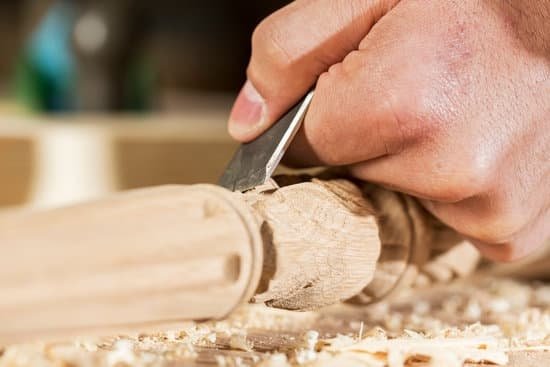Woodworking is a timeless craft that has been practiced for centuries. At the heart of this craft lies the woodworking lathe, a tool that holds immense significance in shaping and transforming raw wood into beautiful finished products. Whether you are a seasoned woodworker or someone with a budding interest in woodworking, understanding the basics of a woodworking lathe is essential to fully appreciate and engage in this fascinating art form.
The term “woodworking lathe” may sound unfamiliar to some, but it is an indispensable tool in the world of woodworking. This powerful machine allows woodworkers to create intricate designs, turn bowls, make spindles, and carve various shapes out of wooden materials. With its versatility and ability to shape wood with precision, the woodworking lathe has become an indispensable tool for both professional craftsmen and hobbyists alike.
In this article, we will explore all aspects of the woodworking lathe. We will delve into its definition, functions, components, operational mechanism, and even the different types available in the market.
By unraveling the secrets behind this essential woodworking tool, we aim to empower you with knowledge so that you can embark on your own creative journey with confidence. So let’s dive into the captivating world of woodworking lathes and discover how these machines enable masterpieces to come to life.
Definition of a Woodworking Lathe
A woodworking lathe is a fundamental tool used in the craft of turning wood. It is a machine that rotates a piece of wood on its axis while various cutting tools shape and transform the wood into intricate designs and functional objects. The art of woodturning has been practiced for centuries, with early evidence dating back to ancient Egypt and China.
Defining Woodturning
Woodturning is a specific technique within woodworking that involves shaping wood using a lathe. The lathe holds the piece of wood securely in place, allowing the woodworker to manipulate it as it spins rapidly. This rotational movement enables the worker to create symmetrical shapes, smooth curves, and intricate details on the surface of the wood.
The Evolution of Woodworking Lathes
The history of woodworking lathes spans thousands of years, evolving from simple hand-driven systems to sophisticated machines powered by waterwheels or electricity. In ancient times, craftsmen used basic bow and pole lathes, which required manual operation by foot or hand. As technology advanced, treadle lathes introduced pedal-powered machinery, making it easier for artisans to produce intricate work.
With the advent of industrialization during the 19th century, woodworking lathes became increasingly mechanized. Steam power replaced manual labor in larger-scale production settings. Today, modern woodworking lathes are equipped with electric motors and offer various speed options for enhanced precision and efficiency.
The definition of a woodworking lathe encompasses not only its function as a turning mechanism but also its historical significance as an essential tool that has evolved over time. Understanding this evolution provides insight into how far this craft has come and allows woodworkers to appreciate the innovation and advancements that have shaped their field.
Components of a Woodworking Lathe
A woodworking lathe is a powerful tool that enables woodturning, a technique used to shape and form wood into various objects such as bowls, spindles, and furniture legs. To fully understand how this machine operates, it is crucial to explore its components and their roles in the woodturning process.
There are several key components that make up a basic woodworking lathe:
- Bed: The bed is the foundation of the lathe and provides stability. It is usually made of cast iron or steel and serves as the base for all other components.
- Headstock: Positioned at one end of the bed, the headstock houses the motor and spindle. The spindle rotates the wood being turned and can have different sizes and configurations depending on the lathe model.
- Tailstock: Located opposite to the headstock, the tailstock provides support for long workpieces. It consists of a quill with a live center that can be adjusted to align with the turning axis.
- Tool Rest: The tool rest is a metal bar that extends horizontally across the lathe and supports cutting tools used during woodturning. It can be adjusted in height and position according to the desired cut.
- Tool Rest Base: This component attaches the tool rest to the bed of the lathe. It allows for easy movement and adjustment of the tool rest during operation.
- Banjo: The banjo is a clamping mechanism that holds the tool rest base in place on top of the bed. It features locking handles or levers for secure fastening.
Understanding these components will help woodworkers operate their lathes effectively and ensure safe woodworking practices. By dissecting the machine, individuals can gain insight into how each part contributes to creating beautiful turned wood pieces.
| Component | Description |
|---|---|
| Bed | The foundation of the lathe that provides stability. |
| Headstock | Houses the motor and spindle. Rotates the wood being turned. |
| Tailstock | Provides support for long workpieces. Contains a quill with a live center. |
| Tool Rest | A metal bar that supports cutting tools during woodturning. |
| Tool Rest Base | Attaches the tool rest to the bed. Allows for adjustment and movement. |
| Banjo | A clamping mechanism that holds the tool rest base in place on top of the bed. |
How Does a Woodworking Lathe Work? Unraveling the Mechanism
Woodworking lathes are fascinating machines that enable woodworkers to transform raw wood into beautifully shaped and finished products. Understanding how a woodworking lathe works is essential for anyone interested in woodworking or looking to expand their skillset. In this section, we will delve into the operational mechanism behind a woodworking lathe and outline the step-by-step process of turning raw wood into a finished product.
At its core, a woodworking lathe operates on the principle of rotating the workpiece while cutting tools remove material from it. The workpiece is securely mounted on the lathe’s headstock, which holds it in place as it rotates. The headstock is connected to a motor that provides the power necessary for rotation. On the opposite end of the lathe is the tailstock, which can be used to provide additional support for longer workpieces.
The cutting tool, typically held in place by a tool rest, is brought into contact with the rotating workpiece. As the workpiece rotates, woodworkers use hand movements and various techniques to shape and smooth it. By adjusting the positioning of the tool rest and changing cutting tools, woodworkers can create precise shapes and designs on the wood.
The process of using a woodworking lathe involves several steps. First, the rough wood stock is mounted on the lathe’s headstock and secured tightly. Once secured, the motor is turned on to rotate the workpiece at a desired speed.
Then, woodworkers use different cutting tools such as gouges, chisels, or scrapers to remove material from the spinning wood stock. They carefully guide these tools along with their hand movements to shape and refine the piece until achieving their desired design.
Understanding how a woodworking lathe works allows woodworkers to unlock their creativity by experimenting with different techniques and designs. It is important to note that proper safety measures should always be followed when operating a woodworking lathe to ensure an enjoyable and injury-free experience. By mastering the mechanism of a woodworking lathe, woodworkers can embark on countless creative projects and continue to hone their skills in the art of woodworking.
Types of Woodworking Lathes
Woodworking lathes come in a wide array of types, each with its own unique features and capabilities. Understanding the different types of woodworking lathes available in the market is essential for woodworkers who are looking to invest in the right machine for their specific needs and projects.
One popular type of woodworking lathe is the benchtop lathe. As the name suggests, this type of lathe is designed to be placed on a workbench or sturdy table. Benchtop lathes are relatively compact and portable, making them a great choice for woodworkers who have limited space or need to transport their lathe to different locations. Despite their smaller size, benchtop lathes can still handle a wide range of turning projects and are suitable for both beginners and experienced woodworkers.
Another common type of woodworking lathe is the floor-standing lathe. These lathes are larger and more robust than benchtop models, offering increased stability and power. Floor-standing lathes are ideal for professional woodworkers or those who frequently work on larger or more complex projects. These lathes often have additional features such as variable speed controls and larger swing capacities, allowing for more flexibility and precision in turning operations.
For woodworkers who require maximum versatility, a combination lathe may be the best option. Combination lathes typically incorporate multiple functions into one machine, such as combining a lathe with a milling machine or drill press. These machines offer the advantage of saving space and cost by eliminating the need for separate machines while providing the convenience of switching between different operations seamlessly.
Ultimately, when choosing a woodworking lathe, it is important to consider factors such as project requirements, available space, budget, and personal preferences. Researching and understanding the various types of woodworking lathes will enable woodworkers to make an informed decision that aligns with their specific needs and goals in their journey towards mastering this craft.
Essential Tools and Accessories for Woodworking Lathes
Woodworking lathes are versatile machines that allow woodworkers to create intricate and beautiful turned wood pieces. However, in order to achieve precision, safety, and creativity in woodworking projects, it is important to have a set of essential tools and accessories specifically designed for use with a woodworking lathe.
These tools not only enhance the craftsmanship but also make the overall woodworking experience more enjoyable. Whether you are a beginner or an experienced woodworker, here are some must-have tools and accessories for your woodworking lathe.
Lathe Chisels
- Lathe chisels are the primary cutting tools used on a woodworking lathe. They come in various shapes and sizes, each suited for different types of cuts and turning techniques.
- The most common types of lathe chisels include gouges, scrapers, parting tools, and skew chisels. It’s important to have a variety of chisels to accommodate different turning projects.
- When selecting lathe chisels, look for high-quality ones made from high-speed steel (HSS) or carbon steel. These materials ensure durability and sharpness that can withstand the demands of woodturning.
Faceplates
- Faceplates are essential accessories that attach to the headstock of a woodworking lathe. They provide a secure platform for mounting workpieces during turning.
- There are various types of faceplates available, including threaded faceplates, screw chuck faceplates, and magnetic faceplates. Choose the type based on your specific needs and preferences.
- It is recommended to have multiple faceplates in different sizes to accommodate various project sizes.
Centers
- Live centers and drive centers are crucial attachments that mount onto the tailstock of a woodworking lathe.
- A live center has bearings that allow it to rotate with the workpiece during turning, providing support and reducing friction. It is typically used for longer workpieces.
- A drive center has spurs that dig into the workpiece, providing the driving force during turning. It is suitable for shorter or bowl-shaped workpieces.
Lathe Chuck
- A lathe chuck is a versatile tool that holds the workpiece securely in place during turning. It consists of jaws that can be adjusted to hold different shapes and sizes of workpieces.
- There are various types of lathe chucks available, including scroll chucks, four-jaw chucks, and collet chucks. Each type offers different advantages and capabilities.
- Investing in a high-quality lathe chuck is worth considering as it provides stability, accuracy, and ease of use when mounting the workpiece.
Safety Equipment
- Safety should always be a top priority when working with woodworking lathes. Therefore, it is essential to have proper safety equipment.
- Safety glasses or goggles protect your eyes from flying wood chips or debris during turning.
- A dust mask or respirator helps filter out harmful dust particles released during woodturning.
- Additionally, wearing hearing protection is advisable as woodworking lathes can produce loud noise levels.
Measuring Tools
- Accurate measurements are crucial for achieving precise and symmetrical turned wood pieces. Therefore, having reliable measuring tools is essential.
- Some commonly used measuring tools include calipers for measuring diameters and depths, rulers or tape measures for overall length measurements, and angle gauges for angle measurements.
- Taking accurate measurements not only ensures the quality of your projects but also aids in creating consistent dimensions throughout your turning process.
By having these essential tools and accessories at hand when using a woodworking lathe, you can enhance your craftsmanship skills while ensuring precision, safety, and creativity in your turning projects. Invest in high-quality tools that suit your specific turning needs to make the most out of your woodworking lathe experience.
Applications and Projects with Woodworking Lathes
Woodworking lathes provide endless opportunities for creativity and craftsmanship. With their versatility and precision, these machines allow woodworkers to create a wide range of projects that showcase their artistic abilities. In this section, we will explore some popular applications and projects that can be accomplished with a woodworking lathe, inspiring readers to push the boundaries of their woodworking skills.
Turning Bowls and Vases
One of the most common applications of a woodworking lathe is turning bowls and vases. By mounting a wooden blank onto the lathe and using various cutting tools, woodworkers can shape the piece into elegant bowls or decorative vases.
The size, shape, and design possibilities are virtually limitless, allowing artists to experiment with different techniques such as adding intricate patterns or embellishments with carving tools. Turning bowls and vases not only showcases the beauty of the wood but also allows woodworkers to express their creativity through unique designs.
Creating Furniture Components
Woodworking lathes are also commonly used to create furniture components such as legs, spindles, and rungs. With the ability to turn straight or curved surfaces with precision, a lathe enables woodworkers to produce turned elements that add aesthetic appeal and structural strength to furniture pieces. Whether it’s crafting elegant chair legs or creating decorative finials for bedposts, a woodworking lathe is an invaluable tool in furniture making.
Turning Pens and Other Small Items
Woodturning on a smaller scale is another popular application of woodworking lathes. Many woodworkers enjoy using their lathe to create intricately turned pens, bottle stoppers, candlestick holders, and other small items. The precise control offered by a lathe allows artisans to craft detailed shapes on these compact objects. With different types of materials available for pen blanks or small turning projects-like exotic woods or acrylics-woodworkers can experiment with various colors, textures, and finishes to achieve stunning results.
Safety Tips and Best Practices
Woodworking can be a rewarding and fulfilling hobby or profession, but it’s important to prioritize safety when working with a woodworking lathe. The following section will provide expert advice and essential safety tips to ensure a safe and enjoyable woodworking experience.
Protective Gear
Wearing appropriate protective gear is crucial when operating a woodworking lathe. Here are some essential items to consider:
- Eye Protection: Always wear safety goggles or a face shield to protect your eyes from flying debris.
- Respiratory Protection: A dust mask or respirator should be worn to prevent inhalation of wood dust particles.
- Hearing Protection: The high volume of noise produced by the lathe can damage your hearing, so wearing earplugs or earmuffs is recommended.
Proper Workspace Setup
Creating a safe and efficient workspace is key to preventing accidents while using a woodworking lathe. Consider the following factors:
- Clear Workspace: Keep your work area clean and free from clutter that may obstruct your movements or cause tripping hazards.
- Stable Base: Ensure that your lathe is securely anchored to a sturdy workbench or stand to prevent it from tipping over during operation.
- Ample Lighting: Good lighting keeps you aware of potential risks and allows you to see details clearly as you work.
Preparing the Wood
Taking proper precautions when preparing your wood for turning is essential for both safety and optimal results:
- Remove Knots and Defects: Inspect the wood thoroughly before mounting it on the lathe, removing any knots, cracks, or other defects that could cause pieces to break off during turning.
- Use Sharp Tools: Dull tools can cause slips and lead to accidents. Keep your tools sharp by regularly honing them on a sharpening stone or wheel.
- Securely Mount the Wood: Make sure that the wood is securely mounted on the lathe and properly balanced to prevent it from becoming loose or flying off while turning.
By following these safety tips and best practices, you can create a safer working environment and minimize the risk of accidents. Remember that woodworking should be an enjoyable and rewarding experience, so take the necessary precautions to protect yourself and others while using a woodworking lathe.
Conclusion
In conclusion, understanding what a woodworking lathe is and how it works opens up a world of possibilities for woodworkers. From its definition and components to its various types and applications, a woodworking lathe offers endless opportunities for creativity and craftsmanship. By familiarizing themselves with the essential tools and accessories, as well as adhering to safety guidelines, woodworkers can embark on their woodworking journey with confidence.
Woodworking lathes have come a long way in terms of history and evolution. They have transformed from simple hand-operated machines to sophisticated power tools that streamline the woodturning process. Whether it’s creating intricate designs or shaping larger pieces of wood, a woodworking lathe is an indispensable tool that can bring any project to life.
By embracing the world of woodworking lathes, individuals can unlock their creative potential and explore new horizons in woodworking. The versatility of this machine allows for the creation of various projects, from decorative bowls and vases to furniture pieces and art sculptures. With practice and dedication, aspiring woodworkers can hone their skills and turn their passion into a fulfilling craft.

Hi everyone! I’m a woodworker and blogger, and this is my woodworking blog. In my blog, I share tips and tricks for woodworkers of all skill levels, as well as project ideas that you can try yourself.





